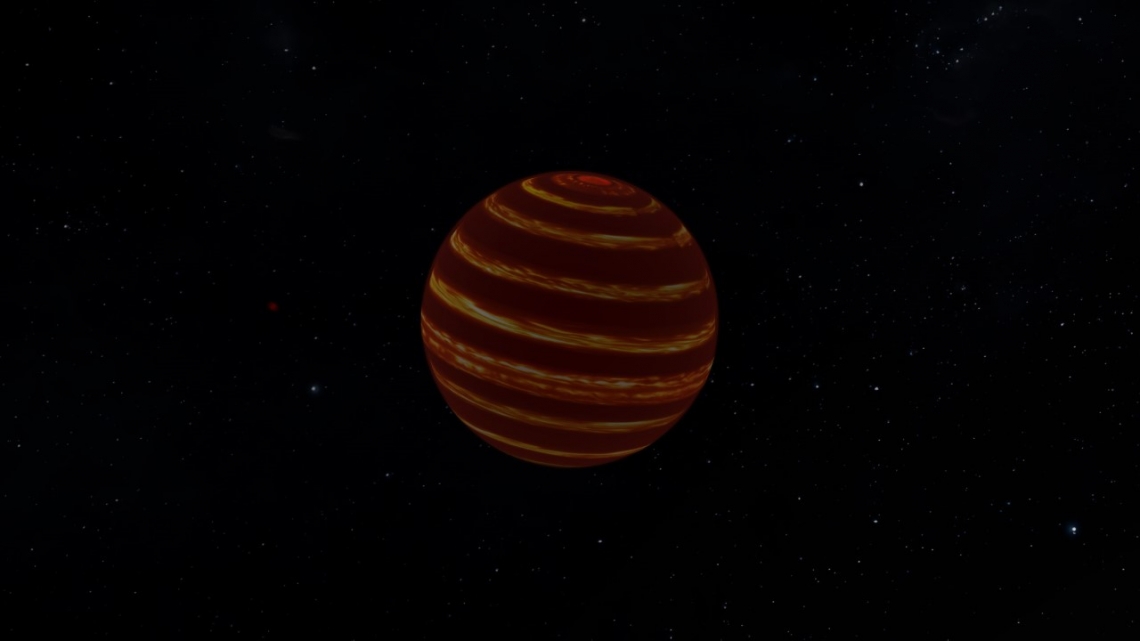Luhman-16 B: The striped dwarf
Luhman-16 B is a brown dwarf – a star that was a little too small to actually become a star and ignite hydrogen fusion in its interior. Brown dwarfs are about the size of Jupiter, but typically dozens of times more massive. Luhman-16 B, along with its brother Luhman-16 A, is the closest to Earth of this type of celestial object. It is also the target of the «Majestic Dracht» in Proxima log 2.
Because of their nature – they do not glow – brown dwarfs are quite difficult to observe. Only with the right tricks can researchers find out more about them. And that’s what a team of astronomers has now managed to do. A research team led by the University of Arizona has found bands and streaks there that suggest processes churning its atmosphere from within.
«We wondered whether brown dwarfs look like Jupiter, with its regular belts and bands formed by large, parallel, longitudinal jets, or whether they are dominated by an ever-changing pattern of giant storms known as vortices, like those found at Jupiter’s poles,» says astronomer Daniel Apai, associate professor in the University of Arizona’s Department of Astronomy. Apai is the lead author of a new study published in the Astrophysical Journal.
He and his team found that brown dwarfs look strikingly similar to Jupiter. Patterns in the atmospheres reveal high-velocity winds that run parallel to the equator. These winds mix the atmosphere and distribute heat from the interior. In addition, as with Jupiter, hurricanes dominate the polar regions.
«Wind patterns and large-scale atmospheric circulations often have profound effects on planetary atmospheres. Knowing how the winds blow and redistribute heat helps us understand climate, temperature extremes and brown dwarf evolution in general,» Apai says. The team used NASA’s Transiting Exoplanet Survey Satellite (TESS) space telescope.
«While the TESS space telescope was designed to search for extrasolar planets, it also provided this incredibly rich and exciting data set about the closest brown dwarf to us,» Apai said. «Using advanced algorithms developed by members of our team, we were able to obtain very precise measurements of the changes in brightness as the two brown dwarfs rotate. The brown dwarfs become brighter whenever brighter atmospheric regions enter the visible hemisphere and dimmer when they rotate out of the field of view.»
Because the space telescope provides extremely precise measurements and is not interrupted by daylight, the team collected more rotations than ever before, providing the most detailed look at a brown dwarf’s atmospheric circulation.
«No telescope is large enough to provide detailed images of planets or brown dwarfs,» Apai said. «But by measuring how the brightness of these rotating objects changes over time, it’s possible to make rough maps of their atmospheres – a technique that could be used in the future to map Earth-like planets in other solar systems that would otherwise be difficult to see.»
